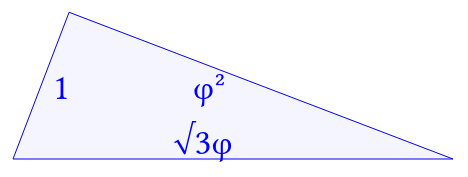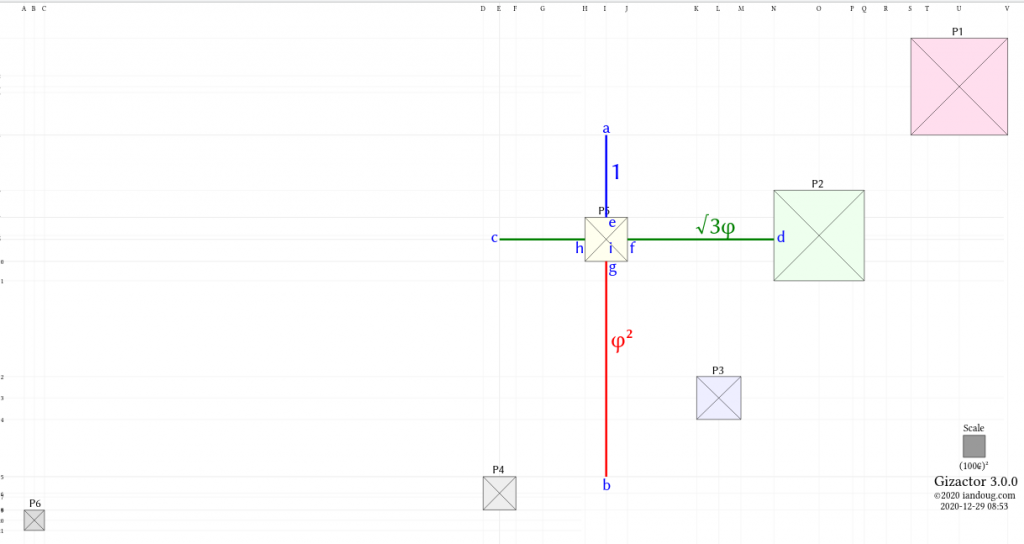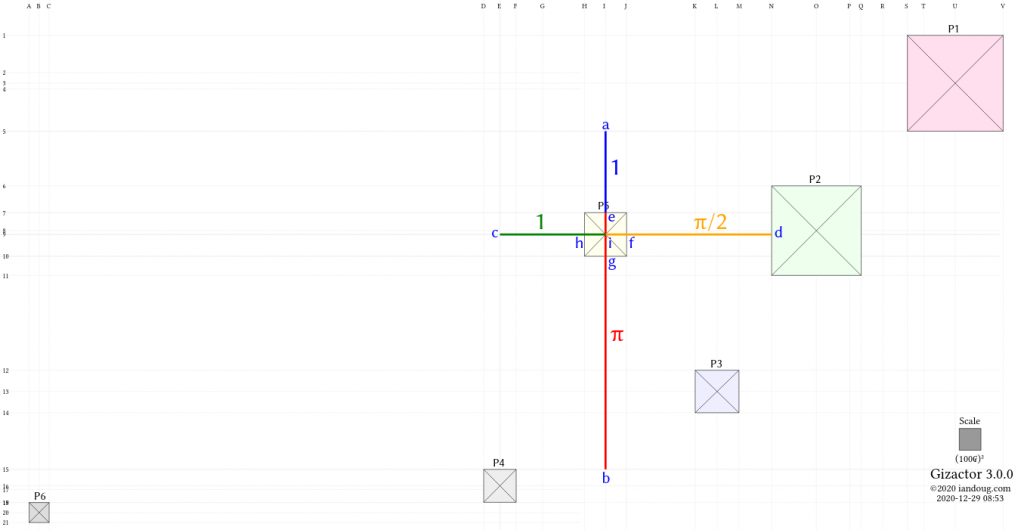As 2021 drew to a close, I uploaded a new paper about the Douglas Triangle, and its use at Giza. It provides the missing link between the base sizes of Khufu and Khafre,
The triangle looks like this:
The triangle has some interesting properties, which are discussed in the paper, available at Zenodo or Academia.
As usual, soon after, I realised a few more things, and now need to update it, but that may have knock-on effect on Zep Tepi Mathematics 101 (ZTM101), so I need to run some checks first.
I have not found a direct use of the triangle (as triangle) at Giza, but have now found the three side ratios. Consider: (click images for larger view)
In ZTM101 I showed that the ratio ae : gb was 1 : φ², which gives us two sides of the triangle. Thanks to the geniuses who designed Giza, if we add ch and fd, then ae : ch+fd are in the ratio 1 : √3φ, giving us the third leg of the triangle:
But Wait! There’s More!
Something I missed when doing ZTM101. If we look at how P5 divides those two lines, we get a pleasant surprise:
When I did ZTM101, I was working under the self-imposed rule that “all pyramids, and the distances between them, were in whole cubits.”
The 1 : φ² ratio placing P5 was one of the last I did, and I was not really happy with the accuracy of the final results. The two lines are 374 and 978 cubits, which gives a ratio of 2.61497 rather than 2.618. If, however, I made P5 half a cubit (about 26cm) bigger on the north side, then we would have 373.5 and 978, giving a much better value of 2.61847. The flip side is that the 1 : √3φ ratio would be worse. It would also move the centre ¼ cubit (about 13cm) north, which would have an impact on a lot of calculations in ZTM101. That will take some time to recheck. With each point in multiple relationships, sometimes we need to compromise and just look at “intent”.
So for now, I will work with what I have. As you just saw, a few centimetres has a visible effect on the accuracy, already compromised by whole-cubit dimensions elsewhere.
The accuracy at the moment is thus:
1 : φ² 99.88%
1 : √3φ 99.39%
1 : π 99.74%
1 : π/2 99.91%





Very interesting as always Ian. So the Douglas triangle revealed by this “cross” centered in P5 is smaller than the one which goes all the way out to P6, right? But you don’t see a use of the triangle revealed by the cross lines on Giza, except with these lines at P5. Am I understanding that right?
Hi Larry
Note I fixed an error in the last diagram (in case you were planning a video).
Not sure which cross you are talking about involving P6 … are you referring to a diagram in ZTM101 ?
Probably better to do this via email.
Cheer, Ian